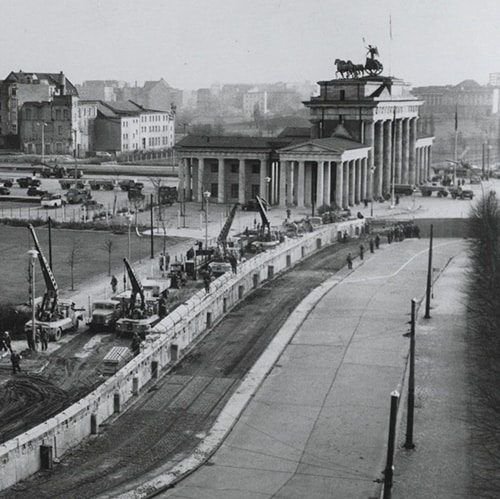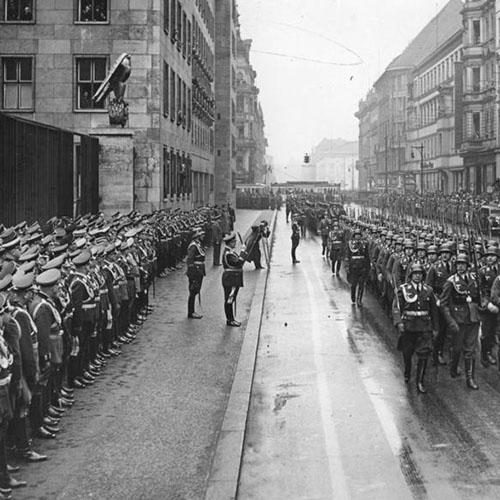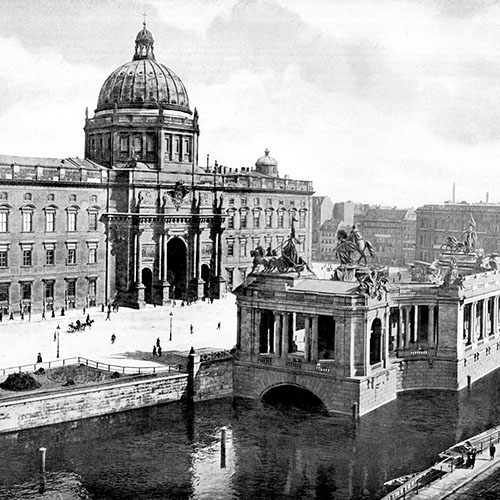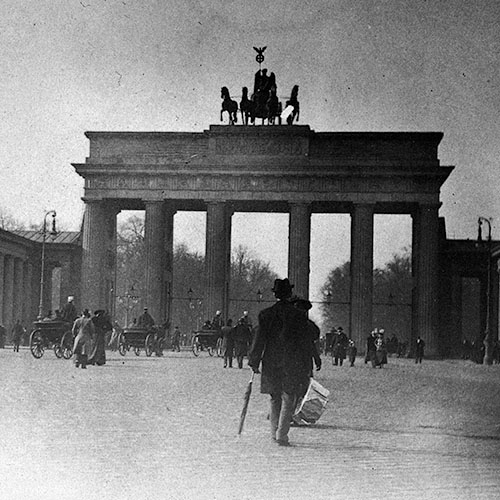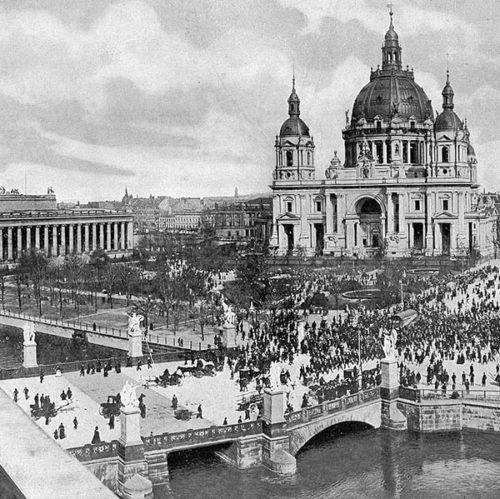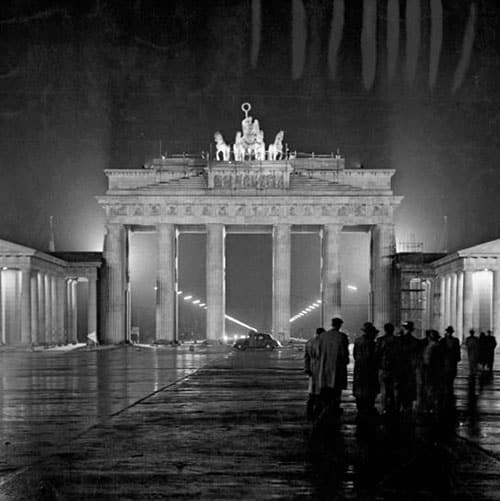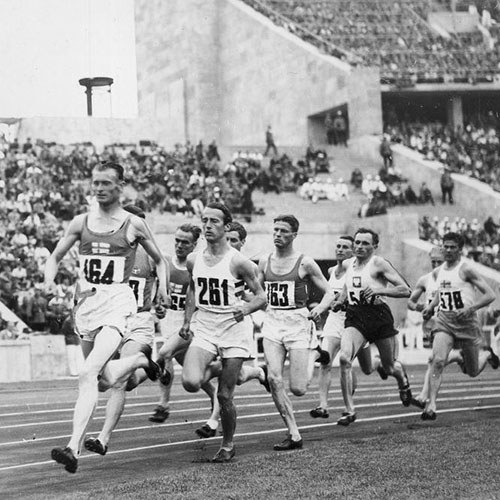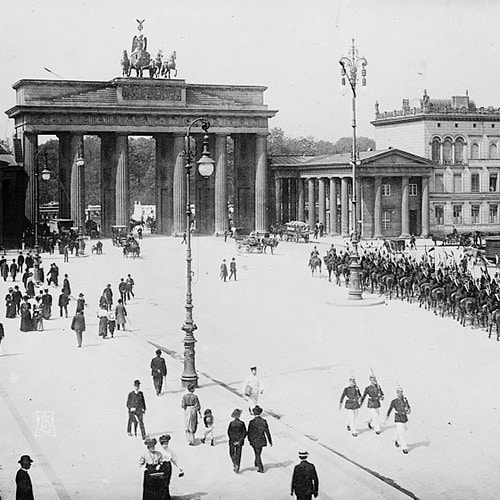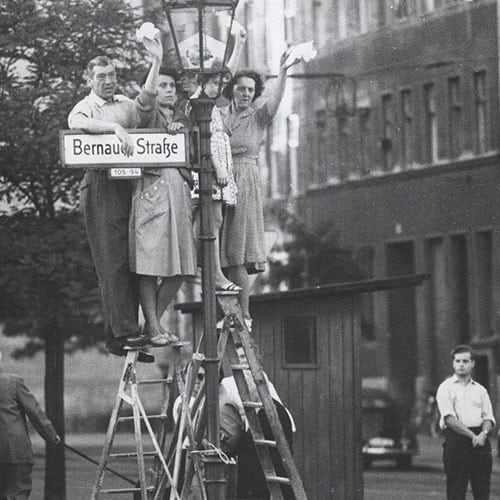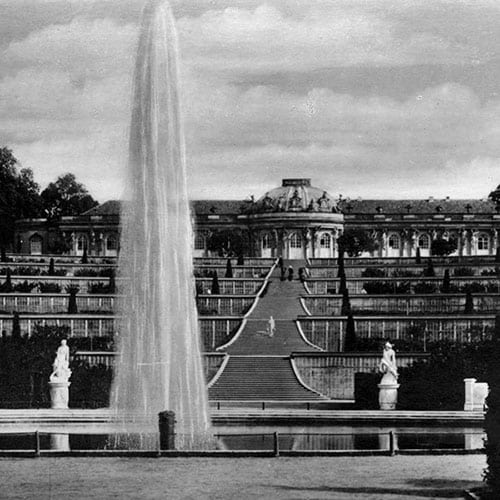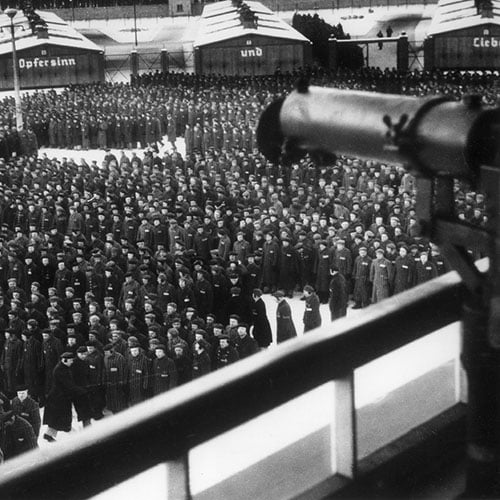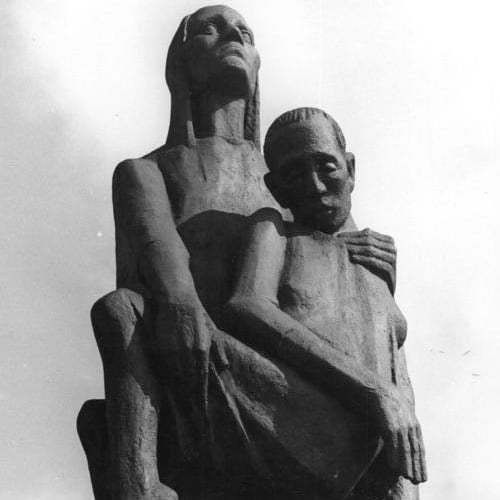“When you see something that is techically sweet, you go ahead and do it and argue about what to do about it only after you’ve had your technical success. That is the way it was with the atomic bomb.”
J. Robert Oppenheimer, director of the Manhattan Project
The period of the Second World War is a great example of this phenomenon. That brutal and prolonged conflict which concluded in September 1945 following the use of a new devastating weapon that would forever change the course of human history. Undoubtedly, the Manhattan Project and the scientific achievements that led to the world’s first nuclear weapons were paramount proof of the ability of wartime urgency to expedite scientific progress.
In retrospect, it would be easy to stand in the shadow of that mushroom shaped cloud and conclude on the supremacy of Allied intelligence. However, plenty of terrifying progress was made by the Axis powers, Nazi Germany especially, that threatened to turn the tide of war against the Allies.
The world’s first operational jet-powered aircraft (the Me 262), the world’s first jet-powered bomber (the Arado Ar234), the world’s first ballistic missile (the V2), the world’s first series produced helicopter (Flettner Fl 282 Kolibri)…the list goes on.
In the midst of all this lethality, there were also some shining examples of positivity: many people would be genuinely surprised to find that there was in-fact a connection between the introduction of the humble bicycle reflector and Adolf Hitler’s regime.
The manufacture and distribution of this often overlooked component that, quite bizarrely, helped to fund the research carried out by one of Nazi Germany’s most insidious institutions – the Ahnenerbe – which sought through its work to lend credence to some of the regime’s worst racial theories.
This unusual story starts with the man who would rise to become the chief of the German police and infamous Reichsführer SS – Heinrich Himmler.

The 'Inheritance From Our Ancestors'
“The best political weapon is the weapon of terror. Cruelty commands respect. Men may hate us. But, we don’t ask for their love; only for their fear.”
Heinrich Himmler
From a young age, Himmler nursed a fascination with legends of the distant past.
His father, Gebhard, an eccentric school teacher with strong nationalist leanings, often read aloud to his sons in the evenings – introducing young Heinrich to the Nibelungenlied, the medieval tale of Siegfried, and the Edda, a collection of ancient Norse sagas. Both inspirations for Richard Wagner’s epic Ring Cycle.
Despite the family’s pronounced middle class standing, an entire room of Himmler’s childhood home was dedicated to Gebhard’s conjured image of the family’s distinguished heritage – an Ahnenzimmer (ancestor room).
As Der treue Heinrich (loyal Heinrich) later rose through the ranks of the Nazi party, his seniority would grant him the opportunity to turn his personal passion into a state enterprise and in 1935, he founded the Ahnenerbe (‘inheritance from our ancestors’), an institute for archeological and cultural research dedicated to procuring evidence of the superiority of the Germanic race. The organisation would eventually find a permanent home in a luxurious Berlin mansion house on Pücklerstrasse, in the quiet neighbourhood of Dahlem, just a few blocks away from where Himmler himself lived.
Ambitious expeditions to Sweden, Finland, and as far away as Iraq and Tibet were organised, with these assignments sometimes jointly serving as military intelligence gathering opportunities. The Ahnenerbe recruited an assortment of scholars, scientists, archaeologists, historians, doctors and researchers – all awarded honorary SS titles.
Excavations soon became an exclusively political endeavour, where artifacts were expected to serve as the title deeds of the nation and a measure of the people’s spiritual currency. Misusing science and scholarship for political ends would become the status quo, as the Nazis sought to pervert the past to justify their persecution of the living. Not only did the organisation attempt to document the racial heritage of the Germanic people but also illustrate the group’s racial supremacy. Special effort was made to identify the origins and classify the characteristics of designated foreign threats.
Researchers endeavoured to produce an index system to help identify, isolate, and eventually annihilate, the inferior jewish race. Undertaking Rassenkunde studies (racial research projects) in the form of increasingly grotesque and sadistic medical experiments that would lead to one of the most notorious war crimes of the period – the procurement of a Jewish skeleton collection.
Despite its central role in Himmler’s quest to legitimise Nazi racial theory – the institute receive little but ridicule from Hitler – who found the glorious achievements of Greek and Roman civilisation far superior to anything Himmler could unearth of the gloomy German past.
Expected to raise its own funding for expeditions and research, the Ahnenerbe was plagued by chronic funding issues from its inception. Himmler, however, ultimately devised a plan that would see the entire country helping foot the bill for his pet project.
–

Bicycle Reflectors - A Unusual Opportunity and Source of Funding
“The state, which is simply the Nazi Party, is in control of everything. It controls investment, raw materials, rates of interest, working hours, wages. The factory owner still owns his factory, but he is for practical purposes reduced to the status of a manager. Everyone is in effect a state employee, though the salaries vary very greatly. The mere efficiency of such a system, the elimination of waste and obstruction, is obvious. In seven years it has built up the most powerful war machine the world has ever seen.”
George Orwell, 1941
Nazi leader Adolf Hitler was no stranger to the bicycle: he had served as a bicycle messenger during the First World War – a fact clearly visible in Hitler’s military records where he is listed as a Catholic, Artist, and Bicycle Messenger.
Following the Nazi takeover in 1933, one of Adolf Hitler’s former drivers, a part-time inventor and loyal party comrade who had spent time in prison for participating in the 1923 Beer Hall Putsch, had started producing bicycle reflectors, to improve the visibility of riders on the roads at night.
Fastening small pieces of glass to bicycle pedals that would reflect the headlights of oncoming cars.
In 1936, Hitler’s SchutzStaffel (SS) formed a joint-company with the inventor, using his name – Anton Loibl GmbH – sometimes shortened to ToLo. With SS help, Loibl applied for and received a patent for his bicycle reflector design. In his capacity as police chief of the Reich, Himmler then issued a new ordinance on road traffic, in November 1937, that made these bicycle reflectors mandatory for all bicycles on German roads.
The SS company would oversee the marketing of Loibl’s invention and use part of the revenue to fuel Himmler’s research projects.

The official licensing agreement stated that surpluses that would inevitably arrive from the incredibly high income generated by these bicycle reflectors had to be used for “charitable purposes as determined by the Reichsführer-SS”.
Industrial producers, of course, had no choice but to pay licensing fees back to the company for the privilege of producing Loibl’s design and within the first year the Ahnenerbe received 77,740 Reichsmarks (RM) from the scheme.
From 1939, this would rise to between 100,000 and 150,000 Reichsmarks per year.
A fine example of ‘crony capitalism’ in Nazi Germany.
The invention, and Anton Loibl’s involvement, would even be favourably mentioned in the magazine of the Reichführer SS in January 1938:
“SS-Obersturmführer Anton Loibl, the inventor of the step beam. The new Reichsstraßenverkehrordnung, which came into force on January 1, 1938, brings an innovation to the safety of the army of millions of cyclists, which consists in the fact that so-called pedal reflectors are introduced instead of the cat’s eye. This new invention, anchored in the law, is thanks to our SS comrade Anton Loibl, who was one of the first drivers of the Führer.”

However, the question of whether Anton Loibl actually invented the bicycle reflector cannot be conclusively answered by simply looking at his name on the patent. In 1935, a couple from Dresden filed a patent (692 562 and 697 207) for a very similar design – which delayed the recognition of Loibl’s own patent by over a year until eventually a settlement could be reached with the Dresden inventors, Dr Rudolf Sewig and Franz Krautschneider had also filed patents for the actual material used in the bicycle reflectors, whereas Loibl’s patent only extended to the arragement of the material in the form of a bicycle reflector. Ultimately, the Dresden pair would receive a reimbursement of 1.5 pfennigs per bicycle and 1/6 pfennig for each bicycle reflector, up to a total of 100,000 RM, from Anton Loibl GmbH.
Complicated as it seems – the evidence seems to indicate that Anton Loibl did NOT invent the bicycle reflector – rather he filed for a patent for the arrangement of the reflector on a bicycle pedal, and clashed with the two inventors from Dresden who had already filed for patents for both the arrangement and the actual material to be used.
Not only would the SS shakedown industry in order to finance their actions – but use their strongarm tactics to ensure that the bicycle reflector patent ended up in their hands rather than with the couple from Dresden.

Regardless of the question of the exact provenance of the bicycle reflector, its introduction would be a huge success for Heinrich Himmler, and the funding of the Ahnenerbe Institute.
Although the activities of the Ahnenerbe came to an abrupt end in 1945 – the section of the traffic order which relates to reflectors, introduced by Himmler in November 1938, is still part of Germany’s street law for bicycles – the Straßenverkehrszulassungsordnung.
Along with two sets of functioning brakes and lights for travelling at night, all riders are required to display two yellow reflectors on each wheel – pedal reflectors – one white reflector on the front of the bike and one red reflector on the rear.
With the notable exception of Ahnenerbe head, Wolfram Sievers, who was executed after a trial in Nuremburg, and Himmler himself, who committed suicide in British custody in 1945, most of the researchers and scientists involved in the organisation’s work continued to practice in their chosen fields following the end of the war. Often hiding in plain sight.
By strange fate, the object that so benefitted these secretive individuals and their insidious work, has served to make untold numbers of bicycle riders visible – drawing attention to their existence and undoubtedly saving many lives in the process.
Without the Nazi introduction and popularisation of the bicycle reflector, it is possible that may not have been the case.
**
Conclusion
NO
Technically the bicycle reflector could be said to have been invented by a Dr. Rudolf Sewig and Franz Krautschneider from Dresden in 1935, although it was successfully patented by a loyal Nazi Party member, Anton Loibl.
The company founded to produce the Loibl bicycle reflector was established by Heinrich Himmler’s personal office – meaning the ties to the Nazi regime are strong. But this connection does more to highlight the crony capitalism tactics of Nazi officials than it does the provenance of the bicycle reflector.
***
HISTORICAL ARTICLES
Mythbusting Berlin
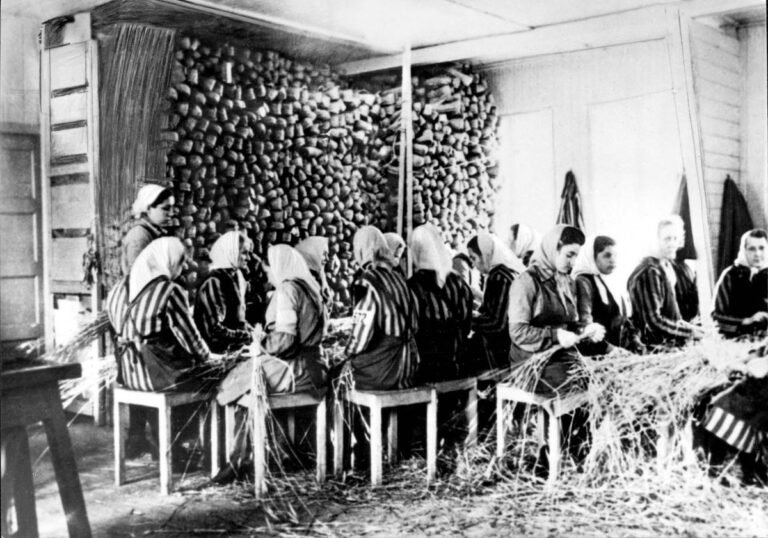
Did Any Of The Rothschild Dynasty Die In The Holocaust? – Mythbusting Berlin
The Rothschild name is synonymous with immense wealth, influence, and persistent conspiracy theories—especially during the era of Nazi Germany. Often targeted by antisemitic propaganda, the family’s survival during World War II has sparked myths about their supposed immunity from Nazi persecution. But did any Rothschild family member actually perish in the Holocaust? This article explores that compelling question, unraveling historical misconceptions and revealing the reality behind one of Europe’s most famous dynasties.
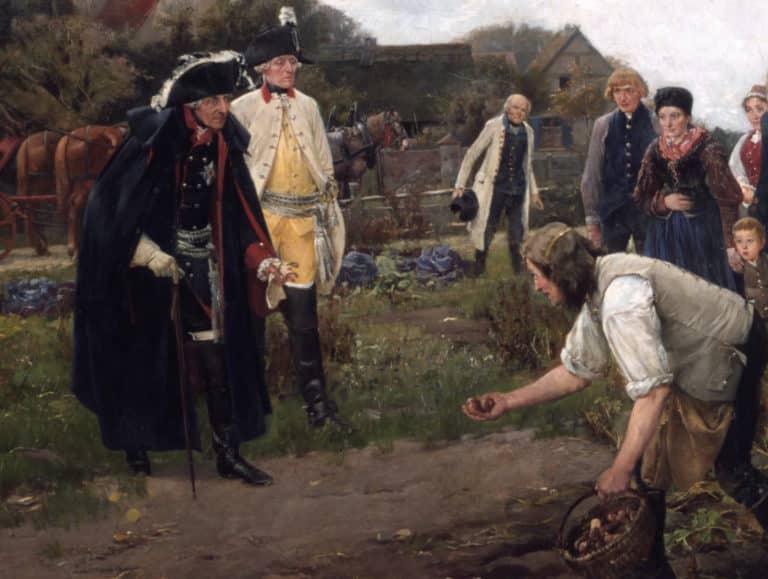
Did Frederick The Great Introduce The Potato To Germany? – Mythbusting Berlin
One of the more bizarre claims to fame attributed to the first King of Prussia is that the man who would go down in history known as Frederick the Great introduced the potato to Germany during his reign back in the 1700s. This starchy root vegetable has undoubtedly become a staple part of German cuisine – an essential addition to any plate of Schnitzel, Schweinshaxn, and Königsberger Klopse – however, whether Frederick the Great is
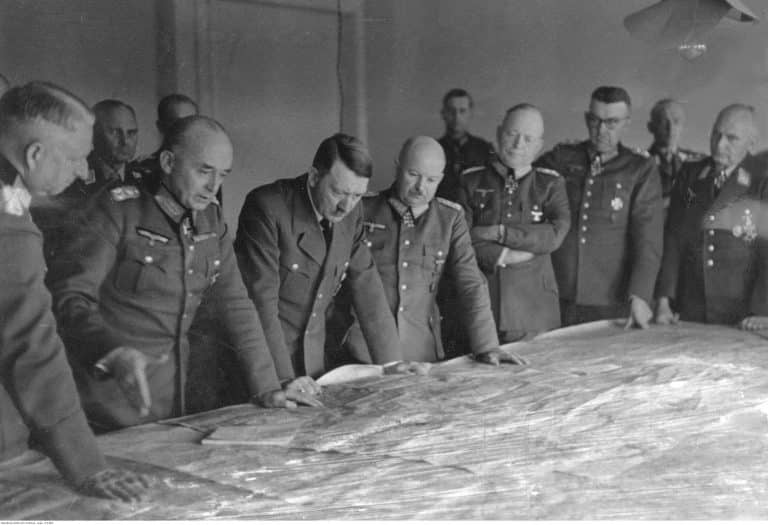
Did Hitler Escape To Argentina In 1945? – Mythbusting Berlin
Although Nazi leader, Adolf Hitler, certainly remains an inescapable figure, could there be any truth to the story of his escape to Argentina in 1945? That the most wanted man on earth could simply vanish, to spend the rest of his life peacefully in South American obscurity captivates imaginations. Yet, despite numerous investigations, this tale persists primarily as myth—fueled by speculation, hearsay, and conspiracy theories.

Did The Nazis Invent Decaf Coffee? – Mythbusting Berlin
Persistent rumors claim that Nazis preferred their coffee anything but pure, leading some to wonder if they might have influenced the development of decaffeinated coffee. Although decaf was already widely available across Europe by the mid-20th century, speculation continues: could the Nazis really have played a role in popularizing—or even discovering—this caffeine-free alternative, or is this simply another caffeinated conspiracy cooked up to sensationalize an ordinary historical detail?

Did The Nazis Invent The Bicycle Reflector? – Mythbusting Berlin
The fruits of wartime ingenuity are plenty – so many, in-fact, that it has become somewhat of a worn cliche that as the guns start firing the innovators get to work, often solving problems while providing more problems for the enemy to overcome.The kind of progress that results in the production of newer improved, more lethal weapons, such as to increase the chances of victory.
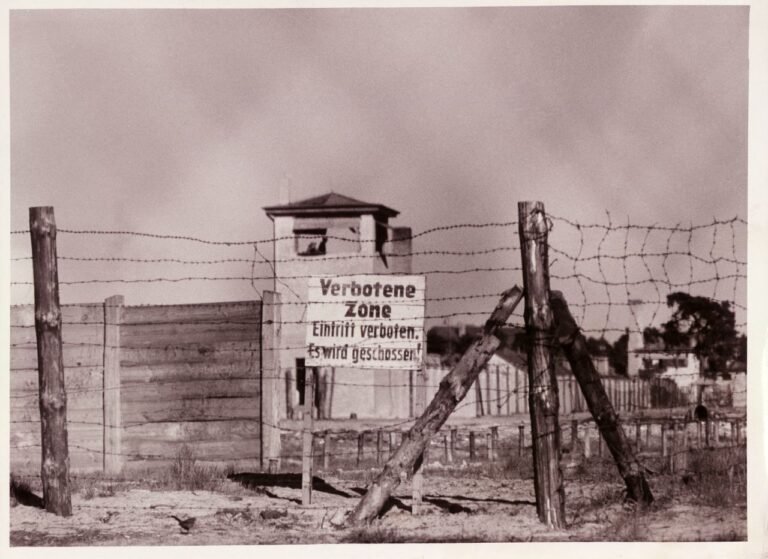
Did The Nazis Run The Largest Counterfeiting Operation In History – Mythbusting Berlin
During the Second World War the Nazis masterminded an astonishing plot to destabilise Britain by flooding its economy with counterfeit banknotes. Crafted in secret by concentration camp prisoners, this forged fortune became the most ambitious counterfeiting operation ever attempted. But was it history’s largest? Dive into the extraordinary tale of Operation Bernhard,
rife with deception, survival, and intrigue—revealing the truth behind one of the Third Reich’s most audacious schemes and its surprising legacy.
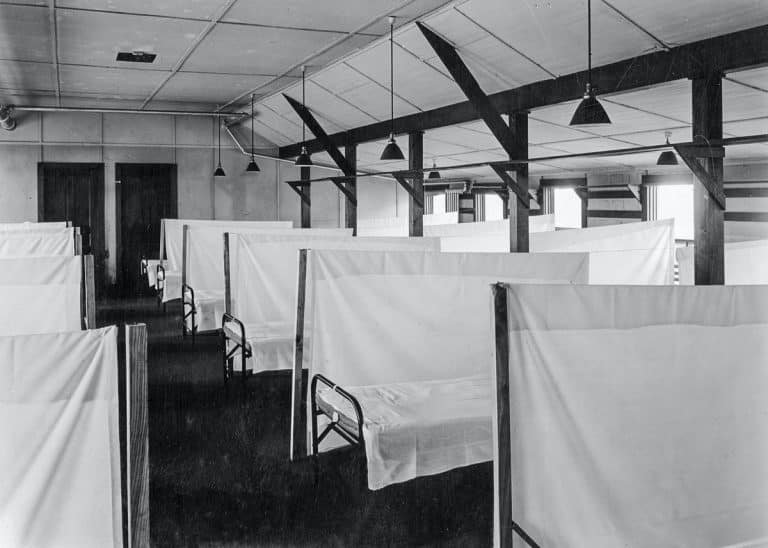
Did The Spanish Flu Pandemic Help The Nazis Take Power? – Mythbusting Berlin
The devastating Spanish Flu pandemic of 1918-1919 struck amid Germany’s post-war turmoil, compounding social instability, economic hardship, and widespread political disillusionment. Could this catastrophic health crisis have indirectly paved the way for Nazi ascension? While often overshadowed by war and revolution, the pandemic’s profound psychological and societal impacts arguably contributed to the perfect storm, enabling extremist ideologies—including Nazism—to gain popularity and ultimately seize power in a fractured Germany.
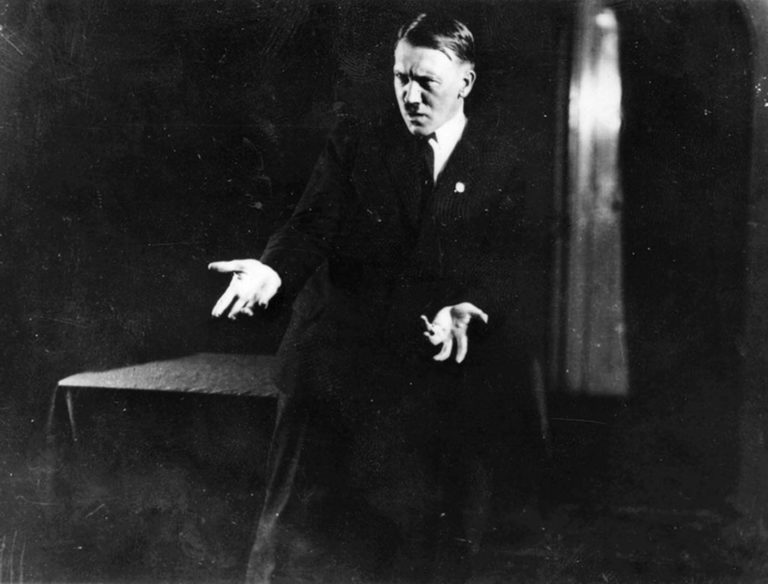
Was Adolf Hitler A Drug Addict? – Mythbusting Berlin
Solving the enigma of the ‘Führer’ has become a preoccupation for many, since the arrival of the Austrian-German onto the world stage – although moving beyond the mythology without falling into the trap of prejudically extrapolating on the psychopathography of Hitler or demonising so as to excuse his actions has proven problematic. What to make of the man who became more than the sum of his masks? The painter; the military dilettante, the mass murderer,

Was Currywurst Invented In Berlin? – Mythbusting Berlin
Explore the story behind what many consider Berlin’s most iconic snack—the ever-so-humble Currywurst. Often hailed as an enduring symbol of culinary creativity amid Cold War scarcity, this humble dish has inspired fierce debate about its true origin. But was it genuinely invented here in Berlin, or have proud locals simply adopted and elevated this spicy street-food favorite into legendary status all their own?
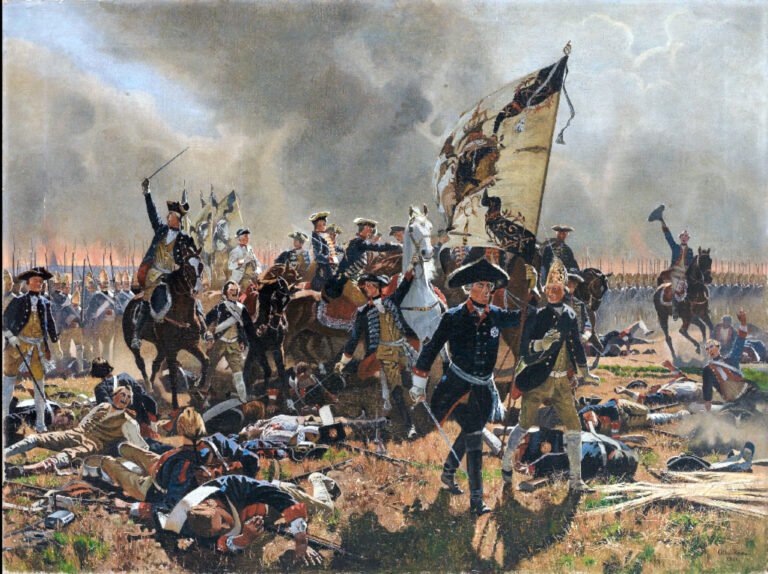
Was Frederick The Great Gay? – Mythbusting Berlin
Frederick II of Prussia, better known as Frederick the Great, is often remembered as the archetypal enlightened monarch – a brilliant military commander, patron of the arts, and learned philosopher. Yet behind the stern portraits of this 18th-century warrior-king lies a personal life long shrouded in intrigue and speculation. Intrigue around the king’s sexual orientation has persisted through the centuries, chiefly revolving around one question: Was Frederick the Great gay?
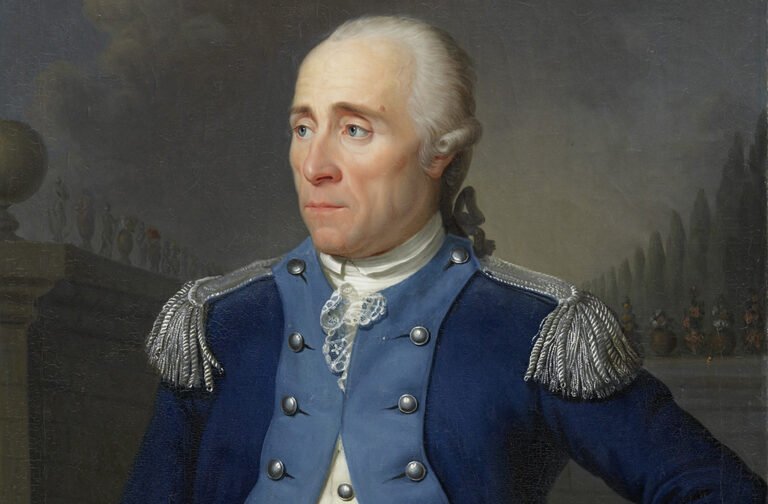
Was The Colour Blue Invented In Berlin? – Mythbusting Berlin
Tracing the true history of blue—from ancient Egyptian dyes to the accidental discovery of Prussian Blue in a Berlin lab. We’ll debunk myths about seeing blue, explore colonial indigo plantations, scale mountains with a cyanometer, and trace Van Gogh’s starry skies—all to answer one question: how did Berlin shape our understanding of the world’s rarest color?
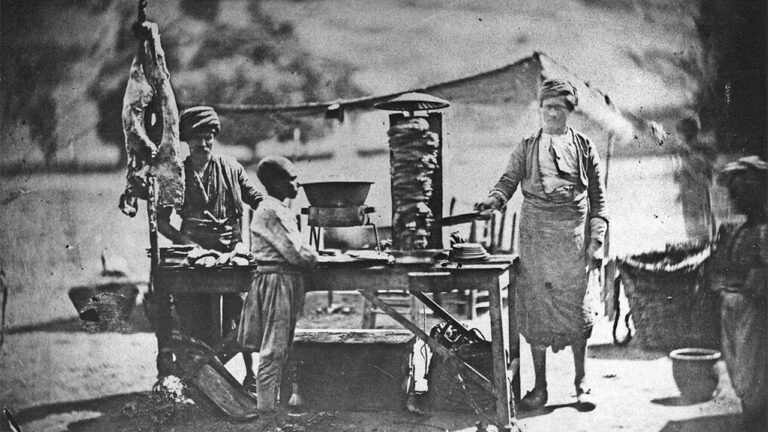
Was The Döner Kebab Invented In Berlin? – Mythbusting Berlin
Unlikely icon of immigrant success; fast food symbol of the working class; over-hyped midnight disco eat; or culturally appropriated cuisine? Its influence goes far beyond layers of seasoned meat and fresh vegetables stuffed into pita bread. But does Berlin deserve credit as the Döner Kebab’s true birthplace, or has the city merely refined and popularized a culinary tradition imported from elsewhere?

Was The Fall Of The Berlin Wall An Accident? – Mythbusting Berlin
On a seasonally crisp night in November 1989, one of the most astonishing events of the 20th century occurred. After twenty eight years, three months, and twenty eight days of defining and dividing the German capital, the Berlin Wall ceased to exist – at least in an abstract sense. Although the removal of this symbol of the failure of the East German system would take some time, its purpose – as a border fortification erected

Was The Nazi Party Democratically Elected? – Mythbusting Berlin
The myth persists that Adolf Hitler rose to power through popular democratic choice. Yet history reveals a darker, more complicated truth. Hitler’s ascent involved exploiting democratic institutions, orchestrating violence, propaganda, and political intrigue—not a simple election victory. Understanding how Germany’s democracy collapsed into dictatorship helps illuminate the dangerous interplay between public desperation, elite miscalculations, and extremist ambition, providing crucial lessons for safeguarding democracy today.

What Happened To Adolf Hitler’s Alligator? – Mythbusting Berlin
It is often said that you can tell a lot about a person by their relationship with animals; that owners often come to look and behave like their pets. Or is it perhaps more that people choose their pets to correspond to their personality? Nazi leader Adolf Hitler’s love of dogs, for example, is well documented but what is there to make of his relationship with reptiles?

What Was Checkpoint Charlie? – Mythbusting Berlin
Checkpoint Charlie remains among Berlin’s most visited historical sites, famed worldwide for its significance during the Cold War. Originally established as a modest border-crossing point, it evolved dramatically over the decades into an international symbol of freedom, espionage, and intrigue. Today, critics and locals often dismiss it as little more than a tourist trap—Berlin’s Disneyland—but how exactly did Checkpoint Charlie get its peculiar name, and what truths hide behind its popularity?
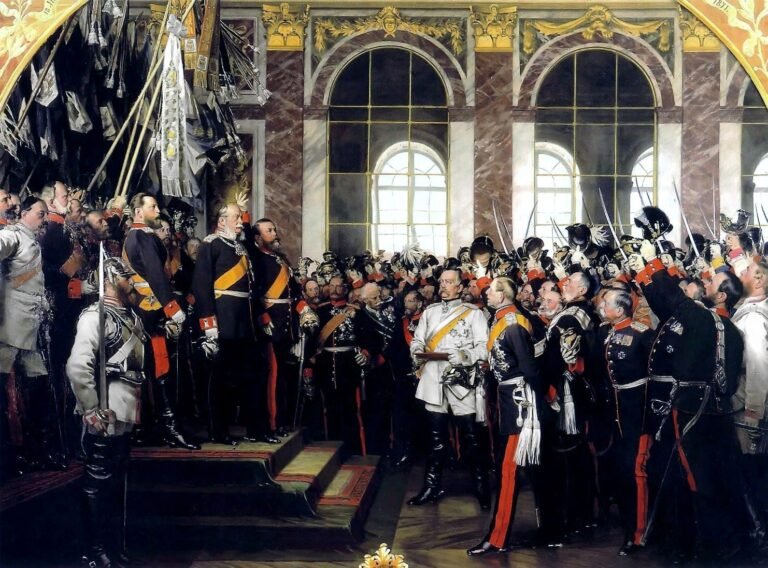
What Was Prussia? – Mythbusting Berlin
Prussia’s legacy is both remarkable and contentious—once a minor duchy, it rose dramatically to shape modern European history. Renowned for military discipline, administrative efficiency, and cultural sophistication, Prussia was instrumental in uniting the German states, laying foundations for a unified Germany. But how did this kingdom, with its roots in Baltic territories, achieve such prominence, and why does its complex history continue to evoke admiration, debate, and occasional discomfort in Germany today?
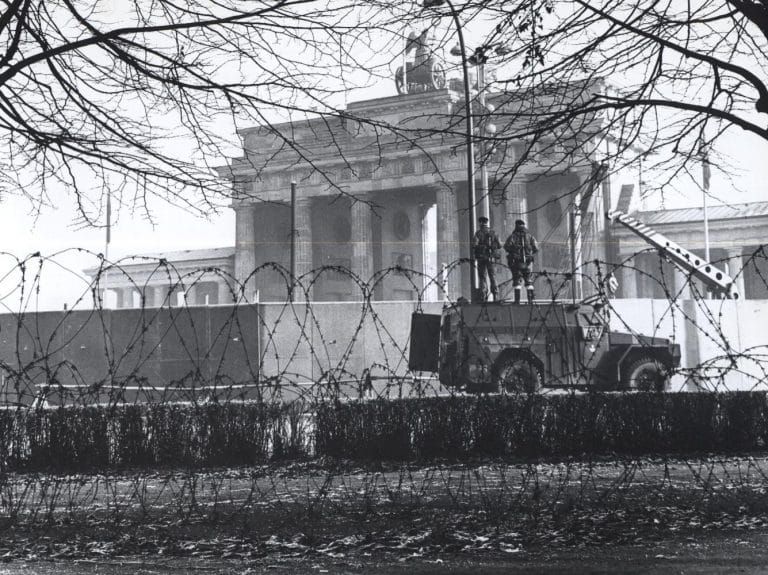
Who Built The Berlin Wall? – Mythbusting Berlin
One of the most common questions I have encountered from people curious about Berlin, and often so cryptically phrased. Who built the Berlin Wall? A simple five-word query, yet one that can be read one of two ways. More than thirty years since the ‘Fall of the Wall’, the story of its construction continues to baffle many who are mainly familiar with its existence through knowledge of its importance…

Who Really Raised The Soviet Flag On The Reichstag? – Mythbusting Berlin
One iconic photograph symbolizes the Red Army’s victory over Nazi Germany in 1945—the Soviet flag waving triumphantly above Berlin’s battered Reichstag building. Yet behind this enduring image lies controversy, confusion, and political manipulation. Who truly raised the Soviet banner atop the Reichstag? Was it a spontaneous act of heroism or carefully staged Soviet propaganda? Decades later, unraveling the truth reveals surprising layers beneath the mythologized symbol of Soviet triumph.
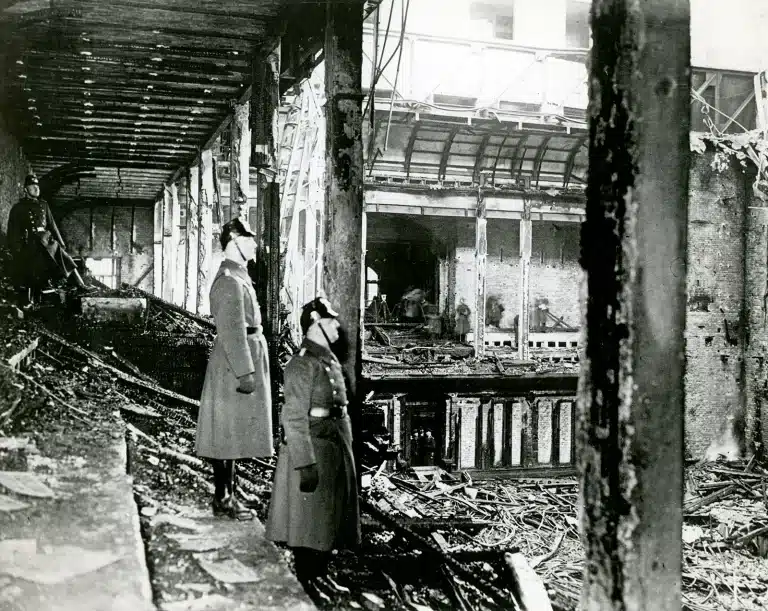
Who Was Really Responsible For The Reichstag Fire? – Mythbusting Berlin
Various theories have been posited as to who actually set fire to the German parliament in 1933. Was it the opening act in an attempted Communist coup or a calculated false flag operation carried out by elements of the Nazi Party, intended to create the conditions necessary for introducing single-party rule? And what part did the young man from Holland, arrested shirtless inside the building the night of the fire, play in this event?

